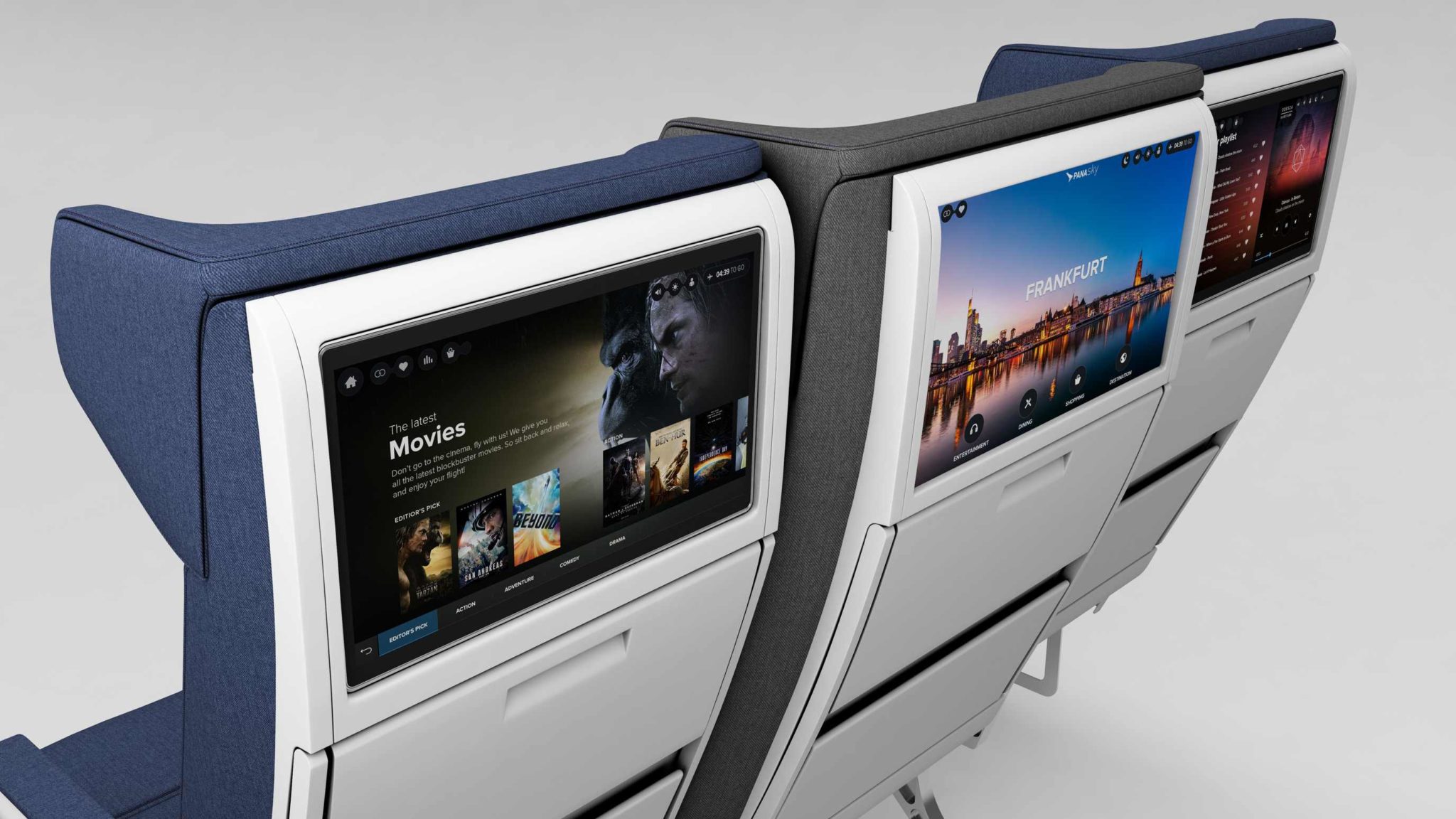Aerospace
Introducing the Widest Economy Class Seats, with the Widest IFE Screens Ever!

Panasonic Avionics Corporation, Molon Labe Seating, and BMW Groups’ Designworks teaming up to develop a Long-Range, high-comfort, Economy Seat
March 22, 2017 – Molon Labe has teamed up with BMW’s Designworks and Panasonic Avionics to create a whole new class of economy seat. This design has made the short-list of the Crystal Cabins Awards: the Oscars of the aircraft interiors industry.
In a world where airlines are pushed towards densification to increase revenues one seat manufacturer is trying to help the inevitable comfort crunch. Offering a method to increase revenues whilst also helping improve the passenger experience.
The S2 also called the Stagger Seat takes the ergonomic advantages of the unique Side-Slip Seat and translates it into a reclining, long-haul economy seat like no other.
By offsetting the middle seat vertically and for/aft the Stagger Seat offers more living space to all occupants. The arms, thighs and elbows of all passengers are no longer adjacent. Visually It is a small offset, but ergonomically it makes a huge difference in passenger comfort. The middle- seat is also 3 inches wider whilst the other seats maintain their standard width.
In addition to the staggered design the team at Designworks added delineated, sculpted armrests and a unique one-sided headrest and Panasonic then took advantage of the wider middle seat and added an immersive 18” monitor, the widest IFE screen available in economy class. The outer seats also benefit from a 16” monitor (larger than the standard 13.3” IFE commonly used in economy).
A conceptual model will be unveiled at the Aircraft Interiors Expo in Hamburg, 4-6th April 2017 in the Panasonic booth (4A10).
Courtesy : Panasonic avionics

Aerospace
Boeing Transfers Rocket Stage to NASA, Paving Way for Human Moon Mission

Boeing has achieved a significant milestone by providing NASA with the second core stage of the Space Launch System (SLS) rocket.
This crucial component, crafted at NASA’s Michoud Assembly Facility (MAF), is set to propel the Artemis II crew into lunar orbit, marking humanity’s return to deep space after a 50-year hiatus.
The monumental Boeing-built rocket stage, the largest element of the Artemis II mission, will embark on a journey aboard the Pegasus barge, traveling 900 miles to NASA’s Kennedy Space Center.
Comparison of two legendary aircraft B777x vs B747 aircraft:Click here
Upon arrival, it will be meticulously integrated with other essential Artemis II components, including the upper stage, solid rocket boosters, and NASA’s Orion spacecraft within the iconic Vehicle Assembly Building. This intricate integration process is a vital step toward the eagerly anticipated Artemis II launch, slated for 2025.
“Boeing-built products helped land humankind on the moon in 1969, and we’re proud to continue that legacy through the Artemis generation,” remarked Dave Dutcher, vice president and program manager for Boeing’s SLS program. “Together, with NASA and our industry partners and suppliers, we are building the world’s most capable rocket and paving the way to deep space through America’s rocket factory in New Orleans.”
NASA, Lockheed Martin Reveal X-59 Quiet Supersonic Aircraft:Click here
The delivery of Core Stage 2 marks a significant achievement in the evolution of the SLS rocket. Towering over 200 feet and powered by four RS-25 engines, this core stage, coupled with two solid-fueled booster rockets, will generate a staggering 8.8 million pounds of thrust. This immense power is crucial to launching Artemis II and future missions into the vast expanse of space.
The SLS rocket stands unparalleled in its capability to transport both crew and substantial cargo to the moon and beyond in a single launch. Its extraordinary capacity will facilitate the delivery of human-rated spacecraft, habitats, and scientific missions to destinations including the moon and Mars, ushering in a new era of space exploration.
-

 Travel1 week ago
Travel1 week agoAir India to Expand US Operations with Three New Routes After a Decade
-

 Travel2 weeks ago
Travel2 weeks agoWhy We Should Avoid These Stamps in a Passport
-

 Airlines1 month ago
Airlines1 month agoInvestigations Reveal Fake Chinese Titanium in Boeing and Airbus Jets
-

 Tech4 weeks ago
Tech4 weeks agoChina’s CATL Plans 1,800-Mile Electric Plane Launch by 2027
-

 Airport3 days ago
Airport3 days agoTop 10 Largest Airports in the World by Size
-

 Aerospace4 weeks ago
Aerospace4 weeks agoChina’s Fighter Jets Turn Wings into Autonomous Drones
-

 Airlines4 days ago
Airlines4 days agoAir India Rolls Out A350s for Delhi-New York JFK and Newark Routes
-

 Defence3 weeks ago
Defence3 weeks agoBoeing Enhances Chinook with New Engines and Block II Upgrades at $96 Million







